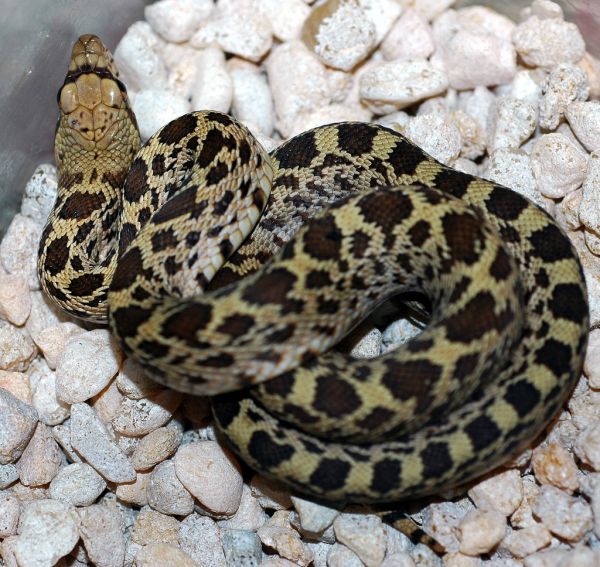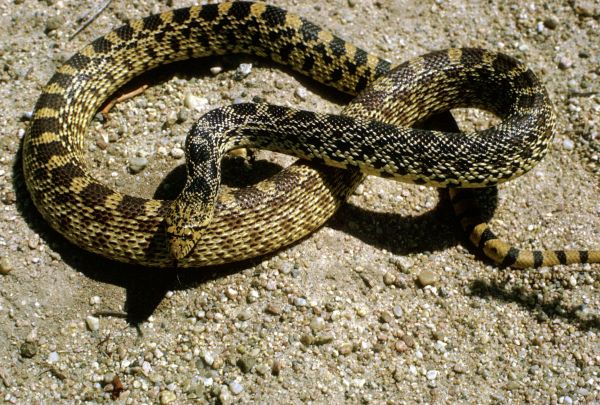Wildlife North America . com North American Animals - mamals, birds, reptiles, insects |
Bullsnake (Pituophis catenifer sayi)
Juvenile Bullsnake, Val Verde County, Texas. Photograph by Clinton & Charles Robertson. Some rights reserved. (view image details) 
Bullsnake Photograph by U.S. Fish and Wildlife Service. License: Public Domain. (view image details)
BULLSNAKE FACTS
DescriptionBullsnakes are usually yellow with brown, black or reddish blotches. A number of color variations are found including albinos. They are often mistaken for rattlesnakes, as it resembles the Western Diamondback Rattler (Crotalus atrox ), which is also common in the same range. The Bullsnake mimics the rattlesnake when threatened, taking on a similar posture, flattening its head. Size length about 1.8m but can grow to 2.5m long. Males are larger than females. Environment open prairies, sand prairies, grassy meadows near woodland. Prefers loose, sandy soil for easy burrowing. Food eats small mammals, large invertebrates, birds, lizards, and small snakes. Juvenile Bullsnakes eat insects, small lizards and young mice. They kill their prey by constriction. Breeding Bullsnakes lay about a dozen eggs in the sand during late June and July. The eggs hatch in August or September. Young Bullsnakes are 30cm - 45cm at hatching. Range found across western half of United States and northern Mexico. Notes Bullsnakes are non-venomous. When threatened they will usually try to flee. In captivity they can be aggressive, although some become docile once accustomed to handling. Classification
Relatives in same Genus Sonoran Gopher Snake (P. catenifer affinis) Pacific Gopher Snake (P. catenifer catanifer) Great Basin Gopher Snake (P. catenifer deserticola) Pine Snake (P. melanoleucus) Home | Mammals | Reptiles | Birds | Insects | Privacy Policy | Disclaimer | Contact Us |